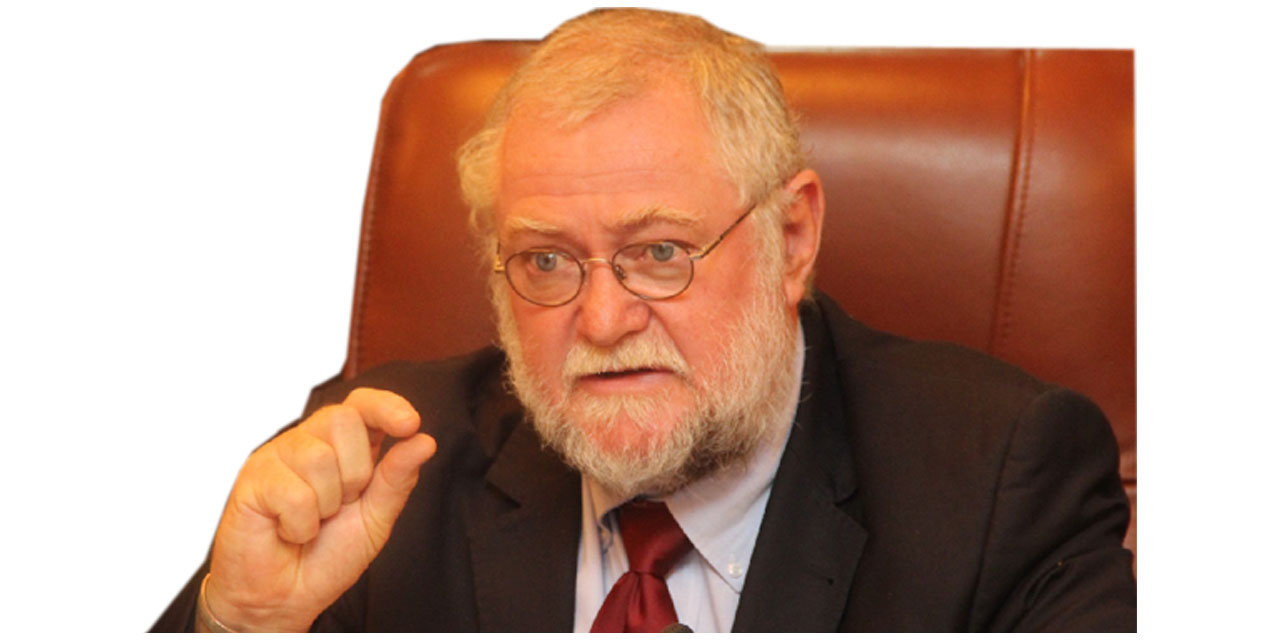Niël Terblanché
The government has given the go-ahead to construct a second desalination plant in the Erongo Region, with a production capacity between 20 and 25 million cubic meters.
This development was announced by the Minister of Agriculture, Water and Land Reform, Calle Schlettwein, during the Land Development conference in Henties Bay on Wednesday.
Schlettwein stated that this monumental initiative in Henties Bay aims to transform the country’s maritime and industrial landscape.
“The project represents a pivotal step towards positioning Namibia at the forefront of the global ocean economy,” he said.
He added that the regional leadership was leading the charge with the Maritime Industrial Estate and Dry Zone (MIEDZ), which aligns with Namibia’s Marine Resources Act 27 of 2000, emphasising the nation’s commitment to operational excellence and environmental stewardship.
According to Schlettwein, the project also encompasses a modular green crude refinery and a bio-oil refinery, enhancing Namibia’s self-sufficiency in refined petroleum products and biofuels.
He added that the initiative promises to boost economic growth through strategic reserves and export opportunities.
According to the minister, plans for a natural gas liquefaction and re-gasification plant and a chemical fertiliser plant reiterate the country’s dedication to leveraging its natural resources for national and regional prosperity.
Projections indicate that Africa’s urban population will double by 2050, with Namibia’s urban areas expected to absorb a significant portion of this growth.
According to the 2022 World Bank Report, Africa’s cities will accommodate an additional 950 million people in the next 30 years.
Schlettwein said that Namibia’s population has already reached 3 022 401, with urban settlements accounting for 54.9% of this total, as per the preliminary 2023 census report.
“This demographic trend necessitates robust infrastructure to support the growing urban populace,” he said.
Schlettwein stressed the need for securing land and advancing pre-development activities to ensure the bulk supply of water, electricity, housing, and social infrastructure.
The Ministry of Agriculture, Water and Land Reform is tasked with administering communal and commercial land under the Communal Land Reform Act No. 5 of 2002 and the Agricultural Commercial Land Reform Act No. 6 of 1995.
The Ministry also oversees the Flexible Land Tenure Act of 2012, which aims to provide land titles to informal residents, offering affordable security of tenure and accelerating urban land delivery.
Schlettwein reiterated the government’s commitment to providing bulk services through NamWater.
“Currently, Namibia relies on two groundwater aquifers and the ORANO desalination plant, integrated by a network of pump stations, pipelines, and reservoirs,” he said.
He added that with the increasing demand from ambitious development plans, mining activities, industrial needs, and agriculture, these sources have reached their sustainable supply limit.
“To meet the growing water demand, approval for a second desalination plant with a capacity of 20 million cubic meters has been granted,” he said.
He added that construction of the plant will start in January 2025 and start supplying fresh desalinated water by early 2027.
He pointed out that at the same time, sanitation systems in Henties Bay, Walvis Bay, and Swakopmund require refurbishment and enlargement to meet the revised sanitation standards approved by the Cabinet in 2023.
He said that in light of climate change and its adverse effects on water availability, Namibia must adapt by tapping into more secure sources such as desalination and shifting towards water-wise agriculture.




